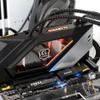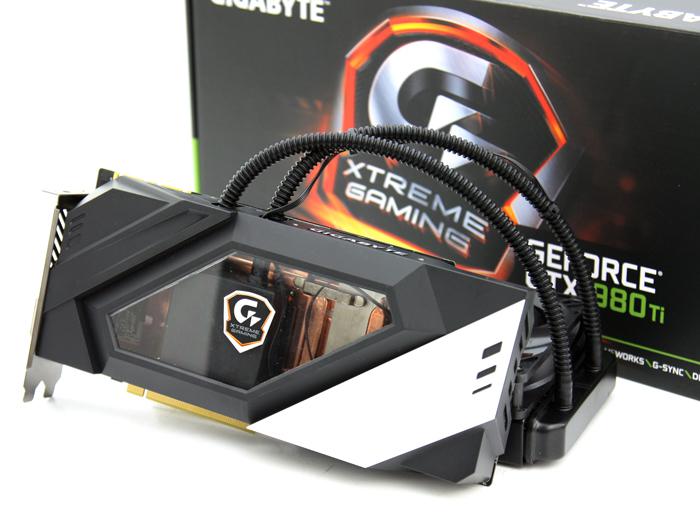Maxwell GPU Architecture
Technology Deep Dive
The GeForce GTX 980 Ti graphics card is based on the latest iteration of GPU architecture called Maxwell, the cards use revision A1 of GM200; also known as "Big Maxwell", the 20 nm node is not ready (and as it stands now is skipped), so these products are based on the rock solid 28 nm fabrication node. Sticking to 28 nm has a side-effect though as the die size of a product of this caliber is big, in fact 601 mm2. With 8 billion transistors you can rest assured that the GM200 S-FCBGA chip is large. GeForce GTX 980 Ti comes with 2,816 shader (CUDA) cores while its little brother the GeForce GTX 980 has 2,048 shader processors at its disposal. The change in shader amount is among the biggest differentials together with ROP, TMU count and memory and obviously Maxwell architecture.
- GeForce GTX 960 has 1,024 shader processors and 2 GB of GDDR5 graphics memory.
- GeForce GTX 970 has 1,664 shader processors and 4 GB of GDDR5 graphics memory.
- GeForce GTX 980 has 2,048 shader processors and 4 GB of GDDR5 graphics memory.
- GeForce GTX 980 Ti has 2,816 shader processors and 6 GB of GDDR5 graphics memory.
- GeForce GTX Titan X has 3,072 shader processors and 12 GB of GDDR5 graphics memory.
The product is obviously PCI-Express 1x, 2.0 and 3.0 compatible, it has a max TDP of around 250 Watts with a typical idle power draw of less than 10 Watts. That TDP is a maximum overall, and on average your GPU will not consume that amount of power. So during gaming that average will be lower.
The GM200 is based on the Maxwell architecture, as such you will get the pre-modelled SMX clusters of what is now 128 shader processors per cluster (which used to be 192 shader processors on Kepler).
There are 24 SMX clusters for the GeForce GTX Titan X and 22 SMX clusters for the GeForce GTX 980 Ti, times 128 shader processors which thus offers you that total of 2,816 and 3,072 shader processors. The reference card will be released with a core clock frequency of 1.0 GHz with a Boost frequency that can run up to 1,076 MHz. As far as the memory specs of the GM200 Maxwell GPU are concerned, these boards will feature a 384-bit memory bus connected to a lovely 6 GB of GDDR5 video buffer memory, AKA VRAM AKA framebuffer AKA graphics memory for the graphics card. On the memory controller side of things you'll see that the reference memory clock (effective data-rate) is now set at 7 GHz / Gbps.
The GeForce GTX 900 and Titan X series are DirectX 12 ready, with Windows 8.1, 7 and Vista also being compatible to take advantage of DirectCompute, multi-threading, hardware tessellation and the latest shader 5.0 extensions. The latest revision of DX12 is a Windows 10 feature only, yet will bring in significant optimizations. For your reference here's a quick overview of some past generation high-end GeForce cards.
| GeForce GTX | 780 | 780 Ti | 970 | 980 | 980 Ti | Titan | Titan Black | Titan X | Titan Z |
| Stream (Shader) Processors | 2304 | 2880 | 1664 | 2048 | 2816 | 2688 | 2880 | 3072 | 5760 |
| Core Clock (MHz) | 863 | 875 | 1050 | 1126 | 1002 | 836 | 889 | 1002 | 705 |
| Boost Clock | 900 | 928 | 1178 | 1216 | 1076 | 876 | 980 | 1076 | 876 |
| Memory Clock (effective MHz) | 6000 | 7000 | 7000 | 7000 | 7000 | 6000 | 7000 | 7000 | 7000 |
| Memory amount | 3072 | 3072 | 4096 | 4096 | 6144 | 6144 | 6144 | 12288 | 12288 |
| Memory Interface | 384-bit | 384-bit | 256-bit | 256-bit | 384-bit | 384-bit | 384-bit | 384-bit | 384-bit |
| Memory Type | GDDR5 | GDDR5 | GDDR5 | GDDR5 | GDDR5 | GDDR5 | GDDR5 | GDDR5 | GDDR5 |
With 6 GB graphics memory available for one GPU, the card is attractive for both modern and future games no matter what resolution you game at. Nvidia reworked the memory subsystem quite a bit, enabling much higher memory clock frequency speeds compared to previous generation GeForce GPUs. The result is this; memory speeds up-to 7 Gbps combined with a faster 384-bit wide bus. Combined with some clever advancements in color compression Nvidia can claim even more bandwidth as Maxwell cards now use 3rd generation delta color compression (eg. 7 Gbps *1/75%) = 9.3 Gbps effective bandwidth thanks to enhanced color compression and enhanced caching techniques.


